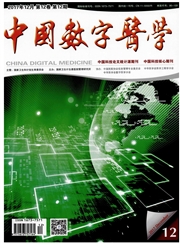

 中文摘要:
中文摘要:
目的:通过对配备RFID标签的标准体模进行核磁成像,评估RFID标签在高磁场下应用的安全性。方法:基于标准的Magphan体模,通过在不同距离放置不同封装类型的13.56M无源RFID标签,对体模在1.5T核磁下成像,从两方面进行RFID在高磁场下应用安全性的验证:一方面对获取的MR图像,测量图像的信号、噪声水平、均匀度、高对比度分辨率和几何失真度,量化评价RFID标签对MR成像质量是否存在影响;另一方面对经过扫描试验的RFID标签进行读识别,检查高磁场是否影响标签的正常工作。结果:临近成像区域的RFID标签对图像信号和噪声水平的影响与未放置RFID标签及远离成像区域的影响有显著差异(P〈O.05)。目测可以看出临近成像区域的RFID标签对对附近的组织产生伪影。RFID标签在1.5T的磁场中放置一小时左右,不影响RFID标签的可识别性。结论:13.56M无源RFID标签作为患者标识,在1.5T磁场下持续使用对自身安全正确使用没有影响,但是其可能影响核磁成像的信号及噪声水平。
 英文摘要:
英文摘要:
Objective: through the MR imaging of standard phantom with RFID label, it evaluated the security of RFID label under highfield. Methods: based on standard Magphan phantom, it applied 1.ST MR imaging through placing 13.56M passive RFID label with different packaging at different location, and verified the security of RFID label under highfield from two aspects. On one hand, for the obtained MR image, measure its signal, noise level, uniformity, high contrast resolution and geometric distortion, and evaluate whether RFID label impacts the quality of MR imaging; on the other hand, identify RFID label with scanning test, and check whether highfield impacts the operation of label. Results: there are great differences (P〈0.05) on the impact of image signal and noise level for area near RFID label and area without or far from RFID label. Visually, one can see the artifact of nearby tissue caused by RFID label around the imaging area. After placed in 1.5T highfield for an hour, it did not affect the identifiability of RFID label. Conclusions: as patient identification of 13.56M passive RFID label, it did not affect the security and application of itself under 1.5T highfield but it may affect the signal and noise level of MR imaging.
 同期刊论文项目
同期刊论文项目
 同项目期刊论文
同项目期刊论文
 期刊信息
期刊信息
